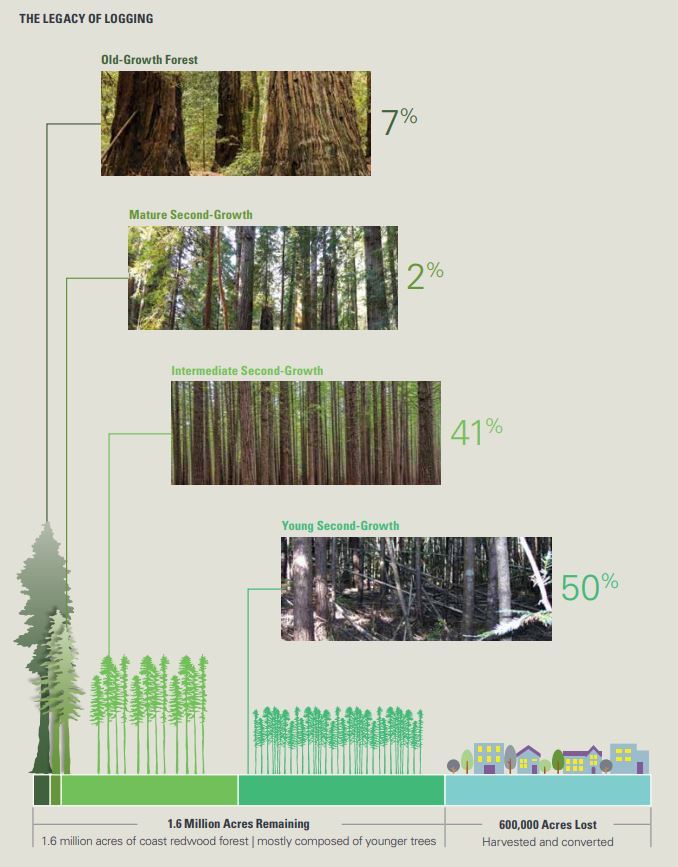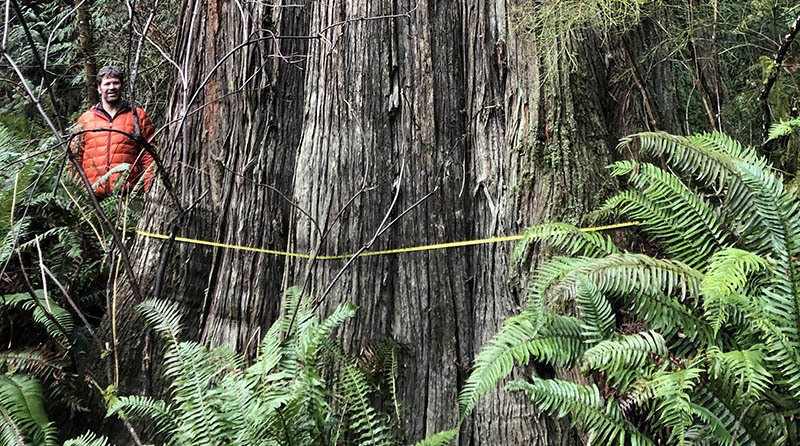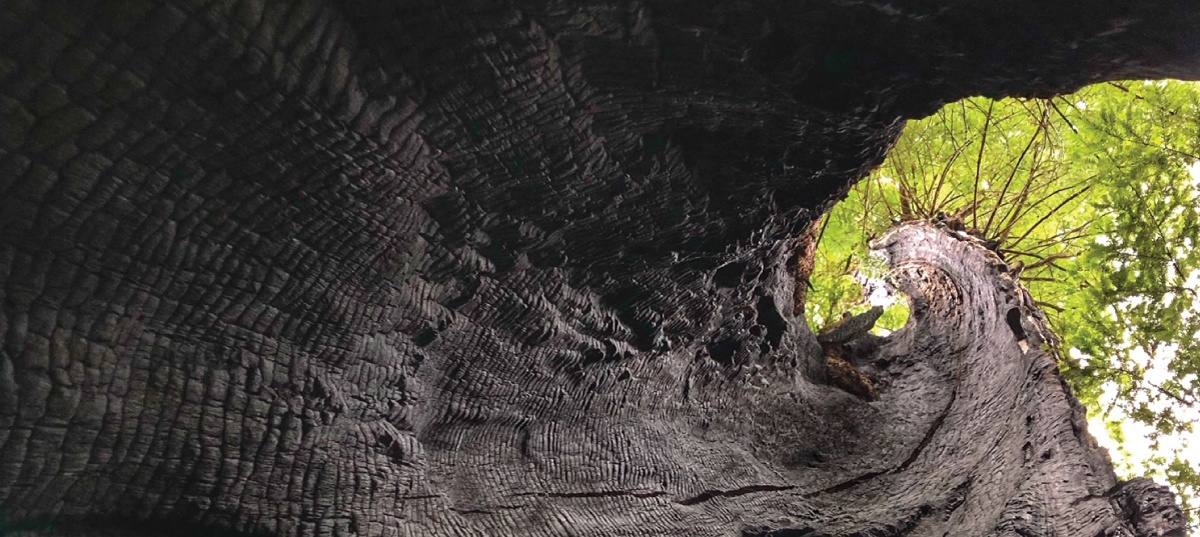Where Highway 101 hugs the Pacific Coast in Humboldt County, north through Del Norte County, Sitka spruce (Picea sitchensis) are loosing needles at an alarming rate. This phenomenon, caused by the non-native green spruce aphid (Elatobium abietinum), grew into a noticeable problem in winter 2019-2020. The aphid thrives during winters with warmer than normal temperatures. Last year’s defoliation was especially severe in Oregon and the aphids continues to move south. Sitka spruce decline in California is in its early stages.
Continue reading “Sitka Spruce Decline in California”All Species Grove
Exploring the remnant old-growth of the Humboldt County Headwaters
In late 1985, a family company in Humboldt County was over taken by a large corporation from Texas. Within a few months, the profit-driven Maxxam Corporation submitted (under the name Pacific Lumber) a furtive timber harvest plan with a rush order to log some of the last, largest swaths of remaining old-growth redwoods in the world. Thankfully, a small group of concerned environmentalists were watching. Leading the guard was Greg King who, along with others, organized and Headwaters Forest Campaign which soon became the largest forest protection civil disobedience demonstration in America’s history.
Continue reading “All Species Grove”Western Redcedar in California
From Alaska south to Oregon western redcedar (Thuja plicata) is the signature tree of the Pacific Northwest temperate rainforest. It has mythic importance to native people, as entire civilizations were sustained, in large part, by this species. Natives of the Pacific Northwest regarded the species as a “Long Life Maker” (Stewart 1984) because they used it for canoes, paddles, houses, roofs, clothes, bedding, rope, cooking, and even medicine. Few giant trees were actually felled before the arrival of Europeans because old snags were usable for many years after death. Highly resistant to rot, the snags or parts of live trees would be harvested instead of the entire live tree. After building a dugout canoe from a tree, Lewis and Clark named it “arbor vitae,” Latin for “tree of life” (Arno 2007).
Continue reading “Western Redcedar in California”Residual Old Growth
Big Trees of the Freshwater Creek Drainage, Humboldt County

Old-growth forests are forests that have developed over long periods of time, without experiencing severe, stand-replacing disturbance—a fire, windstorm, or logging. Within the redwood forest belt, of the estimated 1.6 million acres of redwood forest remaining, only 7% is old growth. The remaining 93% is considered some level of second growth. Around Humboldt Bay where we live that number is approaching 99%. The old-growth trees that do remain are often mixed within the second growth forests. Most often, an old tree was left behind by loggers because of imperfections like broken tops or less than optimal heartwood. This post explores some of the residual old growth in my neighborhood.
Continue reading “Residual Old Growth”Humboldt County Wildflowers
I spoke with Cliff Berkowitz on KHUM’s Happy Trails about places to visit–starting now–to explore spectacular Humboldt County wildflowers. Flowers start flowering early because of the temperate nature of the region. This means that you can find wildflowers starting in January near the coast, all the way to June and July inland in our mountains.
Continue reading “Humboldt County Wildflowers”


